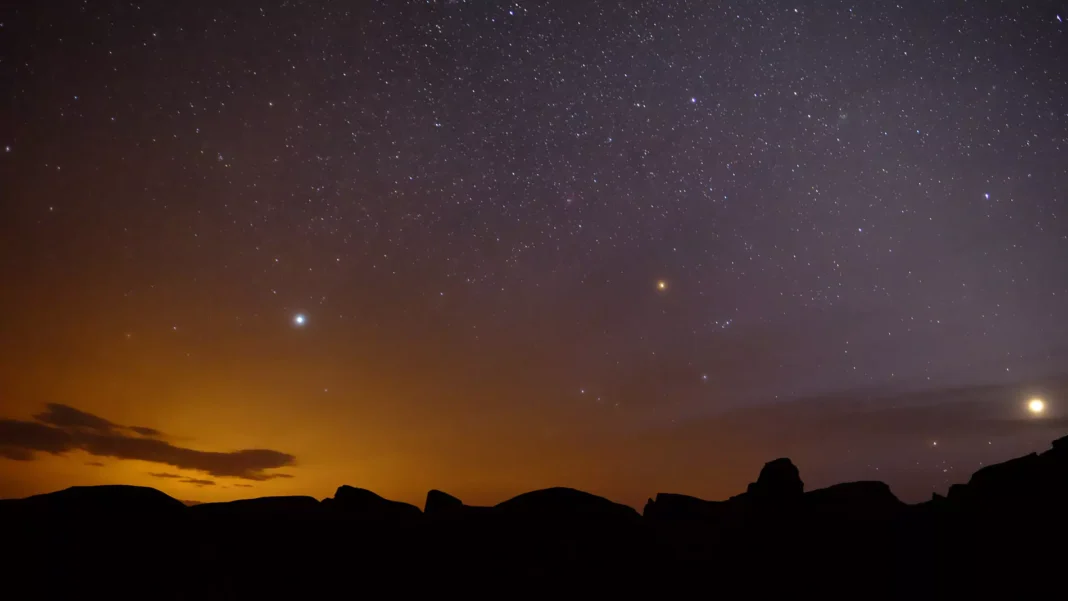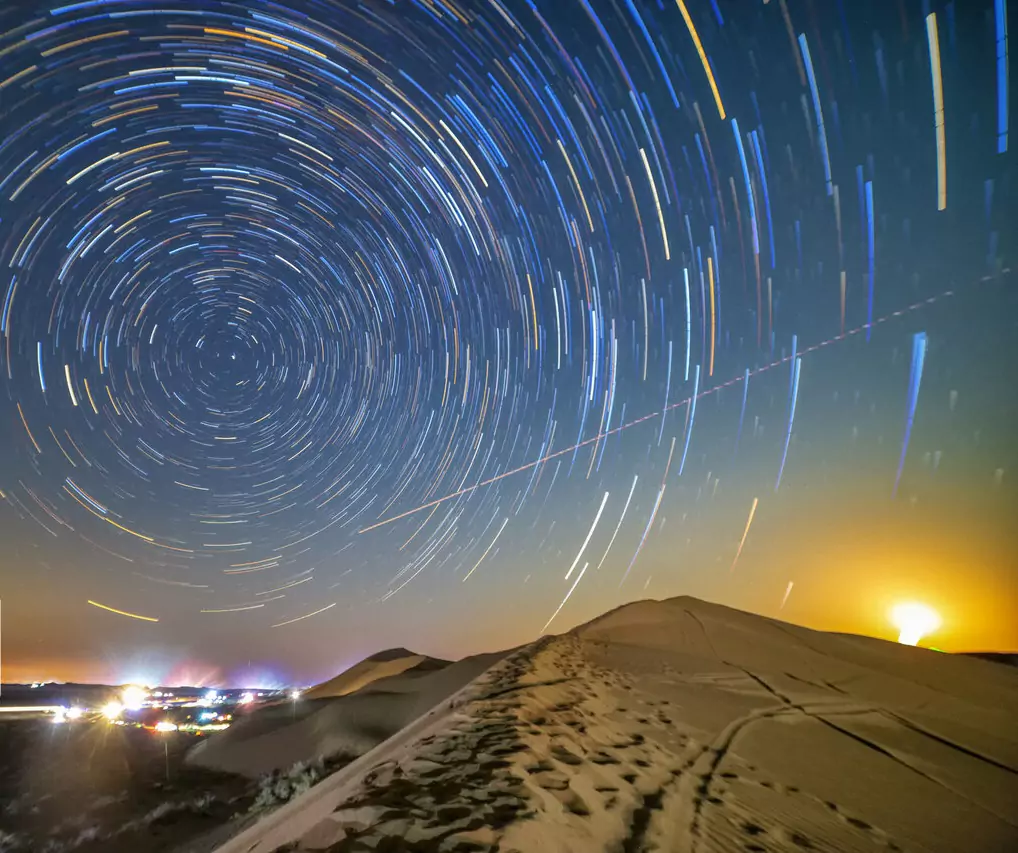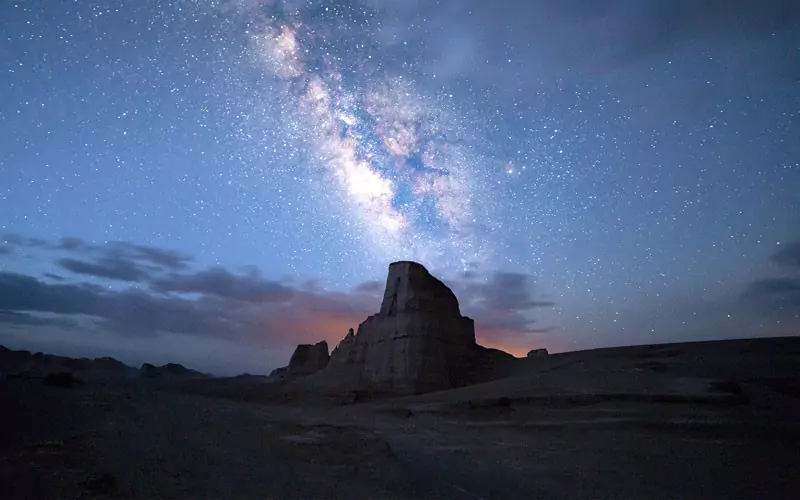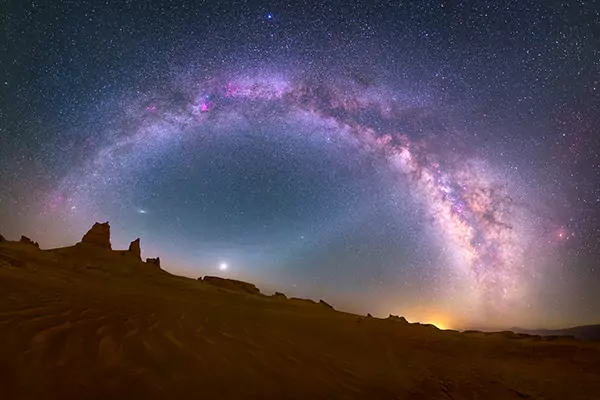The Dasht-e Lut Desert, a UNESCO World Heritage site in southeastern Iran, is not only known for its scorching temperatures and mesmerizing landscapes but also for its unparalleled stargazing opportunities. This vast expanse of desert, with its minimal light pollution and clear night skies, offers a truly awe-inspiring celestial spectacle. Therefore, whether you’re an astronomy enthusiast or simply seeking a unique experience, Dasht-e Lut Desert stargazing will leave you breathless.
Why Dasht-e Lut Desert is Ideal for Stargazing
The Dasht-e Lut Desert boasts several characteristics that make it a prime location for observing the night sky:
- Minimal Light Pollution: Far from any major cities, the Lut Desert offers an escape from light pollution, allowing you to witness the stars in their full brilliance.
- Clear Skies: Furthermore, the dry desert air and minimal cloud cover ensure crystal-clear skies, perfect for observing celestial objects.
- Vast Open Space: Moreover, the expansive desert landscape provides an unobstructed view of the horizon, allowing you to see a wider expanse of the night sky.
- Unique Desert Landscape: Finally, the otherworldly beauty of the Lut Desert, with its sand dunes, kaluts (yardangs), and salt flats, adds another dimension to your stargazing experience.
What to Expect When Stargazing in Dasht-e Lut
Prepare to be amazed by the sheer number of stars visible in the Lut Desert night sky. The Milky Way stretches across the sky like a luminous river, and constellations appear with a clarity rarely seen elsewhere. With the naked eye, you can observe planets, shooting stars, and even satellites. In addition, if you have binoculars or a telescope, you can delve deeper into the cosmos, observing nebulae, galaxies, and other celestial wonders.
Planning Your Dasht-e Lut Stargazing Trip
Best Time to Go
While stargazing is possible year-round in the Lut Desert, the best time to visit is during the spring and autumn months (March-May and September-November). These shoulder seasons offer pleasant temperatures and clear skies. However, summer (June-August) can be scorching hot, while winter (December-February) can be chilly, especially at night.
Getting There
The most common starting point for Iran stargazing tours to the Lut Desert is Kerman, a city with an airport and good transport connections. From there, you can join organized tours or hire a private driver to take you to the desert.
Where to Stay
- Desert Camps: Several desert camps offer basic accommodation and facilities, allowing you to spend the night under the stars.
- Shahdad: Alternatively, this small town on the edge of the desert offers guesthouses and hotels, providing a more comfortable base for your stargazing adventures.
What to Bring
- Warm Clothing: Evenings in the desert can be cool, so pack layers, including a jacket and hat.
- Flashlight: A red-light flashlight is ideal for preserving your night vision.
- Binoculars or Telescope: Similarly, enhance your stargazing experience with these tools.
- Camera and Tripod: Capture stunning astrophotography shots of the night sky.
- Insect Repellent: Also, protect yourself from mosquitoes and other insects.
- Water and Snacks: Lastly, stay hydrated and energized during your stargazing excursions.
Tips for Stargazing in Dasht-e Lut
- Allow your eyes to adjust to the darkness: It takes about 30 minutes for your eyes to fully adapt to the dark, allowing you to see more stars.
- Use a star chart or app: Consequently, these tools can help you identify constellations, planets, and other celestial objects.
- Find a dark spot away from campfires and other lights: In other words, minimize light interference for optimal viewing.
- Be patient and enjoy the experience: Above all, stargazing requires patience and a sense of wonder. Relax, take in the vastness of the universe, and appreciate the beauty of the night sky.
Beyond Stargazing: Other Activities in Dasht-e Lut
While stargazing is a highlight of any visit to the Lut Desert, there are other activities to enjoy during the day:
- Explore the Kaluts: These unique yardang formations, sculpted by wind erosion, are a must-see.
- Visit the Shahdad Desert: For instance, this area is known for its towering sand dunes and the Gandom Beryan, a vast area of black volcanic rock.
- Hike and trek through the desert: Likewise, discover hidden oases and enjoy the tranquility of the desert landscape.
- Experience desert camping: In the same vein, immerse yourself in the desert environment and enjoy traditional Iranian hospitality.
Capture the Magic: Astrophotography in Dasht-e Lut
The Lut Desert’s dark skies and stunning landscapes provide the perfect backdrop for astrophotography. With this in mind, with a camera and tripod, you can capture breathtaking images of the Milky Way, constellations, and other celestial phenomena. Experiment with different settings and techniques to create your own unique starry masterpieces.
Responsible Travel in Dasht-e Lut
- Respect the environment: Pack out all trash and avoid disturbing the delicate desert ecosystem.
- Stay on marked trails: As a result, help prevent erosion and protect fragile plant life.
- Conserve water: Water is a precious resource in the desert, so use it sparingly.
- Support local communities: To this end, choose tours and accommodations that benefit local people and businesses.
Dasht-e Lut Desert Stargazing: An Unforgettable Experience
In conclusion, Dasht-e Lut Desert stargazing offers a unique opportunity to connect with the cosmos and witness the beauty of the universe in its purest form. The combination of dark skies, stunning landscapes, and the tranquility of the desert creates an unforgettable experience that will stay with you long after you leave.







